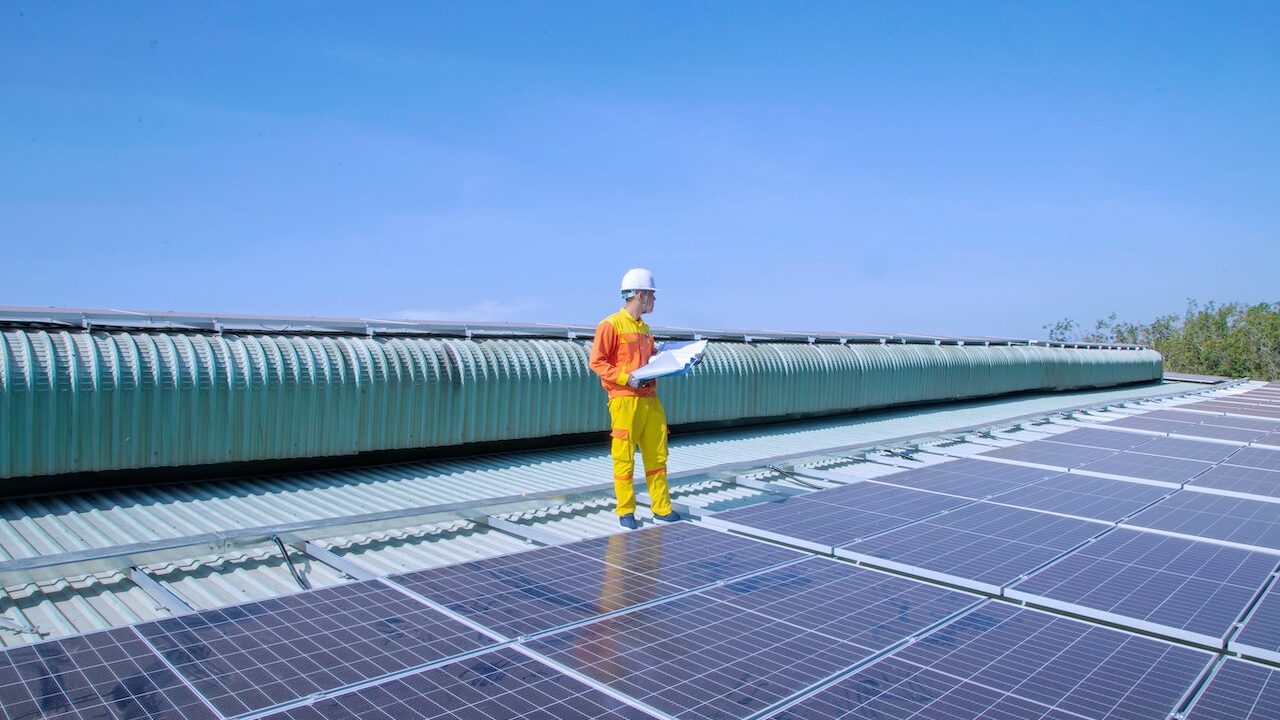Introduction:
Solar energy is a clean and renewable energy source that is gaining popularity as the globe transitions to a more sustainable future. Photovoltaic (PV) panels, usually referred to as solar panels, capture solar energy and transform it into useful power. But it can be difficult to choose the best solar panel for you given the variety of options on the market. We’ll go deeply into the many types of solar panels, their installation, and maintenance in this comprehensive guide to solar panels. This guide will assist you in making an informed choice about how to make the most of your solar energy system, whether you’re a homeowner, a company owner, or a renewable energy enthusiast.

Types of Solar Panels:
Solar panels come in four main varieties: monocrystalline, polycrystalline, bifacial, and thin-film. Each variety has special traits, benefits, and drawbacks of its own.
1. Mono-crystalline panels:
The most effective and pricey solar panel type is monocrystalline. They are all the same shade of black and are created from a single silicon crystal. Comparatively speaking, monocrystalline panels are more robust and last longer. Additionally, they are the best at turning sunlight into electricity. They cost more to build and install, though.
2. Polycrystalline panels:
Multiple silicon crystals are used to make polycrystalline panels, which are coloured blue. They cost less to produce and install but are less effective than monocrystalline panels. Compared to monocrystalline panels, polycrystalline panels are less robust and have a shorter lifespan. However, due to their accessibility, they are a preferred option for homeowners.
3. Bifacial panels:
A brand-new kind of solar panel called a bifacial panel can take in light from both sides. They may boost energy output by up to 30% and are generally built of monocrystalline or polycrystalline cells. Though more expensive than conventional solar panels, bifacial panels can be a good choice for homeowners with small roof spaces.
4. Thin-film panels:
Different materials, including amorphous silicon, copper indium gallium selenide (CIGS), and cadmium telluride (CdTe), are used to create thin-film panels. Despite being the least effective, they are also the least expensive to manufacture and install. Thin-film panels may be used into construction supplies like shingles, tiles and windows since they are flexible.
Solar Panel Installation:

It’s important to install on your roof properly to ensure optimal efficiency and lifespan as it’s a substantial investment. The steps for installing solar panels are as follows:
Assess your roof’s suitability:
You must determine whether your roof is suitable for solar installation before installing solar panels. Your roof must be sturdy enough to hold the panels and allow for adequate sunlight. The direction and slope of your roof also have a big impact on how effective your solar panels are.
Determine the number of panels needed:

Your energy needs, the size of your roof, and the solar panel type you select will determine how many solar panels you require. To determine how many solar panels your home will need, utilize online solar calculators.
Obtain permits:
Before mounting solar system on your roof, you must get licenses from the local government. The permits will guarantee that your installation complies with building and safety regulations. You can get aid from your solar installation with the application procedure.
Choose a solar installer:
For your solar panels to be installed professionally and effectively, choosing the appropriate solar installer is essential. Find a reputable installer with solar panel installation experience. You might consult your friends, relatives, or the local renewable energy group for advice.
Install the solar panels:
The installation procedure may start when you’ve picked an installer and gotten the necessary permits. The panels will be connected to your home’s electrical system and mounted on your roof by your solar contractor. Depending on the size of the installation, the process might take a few days to a few weeks.
Solar Panel Maintenance:

These panels require minimal maintenance, but it’s essential to keep them clean and check for any damage regularly. Here are some maintenance tips for solar panels:
Clean the panels:
Remove any dirt, debris, or bird droppings from the panels to increase their effectiveness. Water and a gentle brush or towel should be used to clean the panels. Avoid using strong chemicals or abrasive products that might harm the panels.
Check for damage:
Examine the panels often for any cracks, chips, or other damage. The effectiveness and longevity of the panels may be affected by damage. If you discover any damage, get in touch with your solar installation.
Trim surrounding trees:
The effectiveness of the panels might be affected by trees or other objects that shade them. Trim the trees in the area and clear the panels of any debris that could fall there.
Monitor performance:
Regularly monitor the operation of your solar panels. The majority of solar panels have tracking software that lets you keep tabs on energy output and efficiency. If you observe a severe decrease in performance, get in touch with your installer.

Conclusion:
For households and companies trying to lower their energy costs and carbon impact, solar panels are a great investment. You can choose the ideal solar energy system for your needs by having a thorough grasp of the many solar panel types, their installation, and maintenance. For optimal effectiveness and lifespan, bear in mind to select a reliable solar installation, secure the necessary permissions, and maintain the cleanliness and maintenance of your solar panels. You may benefit from clean, renewable energy and help create a more sustainable future with the proper solar energy system.







